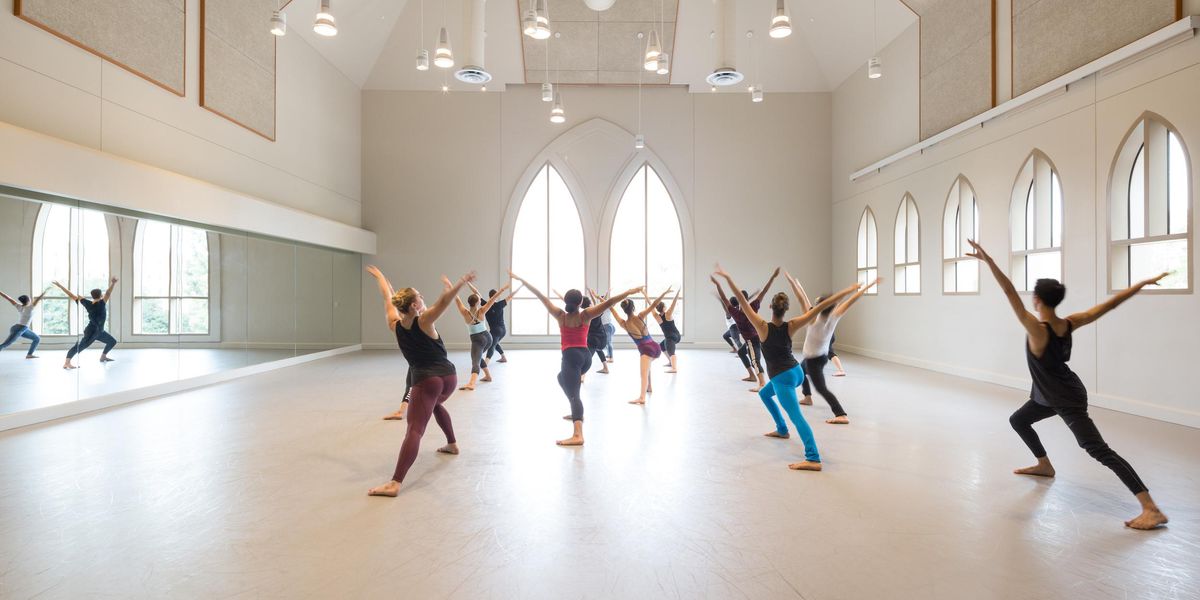Dance Matters: High Five
Ballet West dancers rehearsing at Millennium Park’s Jay Pritzker Pavilion at the 2010 CDF. Photo by Todd Rosenberg, Courtesy CDF.
Over dinner in the fall of 2006, choreographer Lar Lubovitch and dancer Jay Franke decided that the city of Chicago had something it didn’t need.
“The idea that dance is an elitist or difficult art,” as Lubovitch puts it. A summer performance, free to the public, featuring world-class dancers and artful choreography, could send misconceptions running for cover. In a moment the Chicago native describes as “spontaneous combustion,” the Chicago Dancing Festival was born.
A trial experiment of modest scale seemed the best place to start; the two agreed that a 300-seat theater at the Museum of Contemporary Art fit the bill. But directors there convinced the pair to think bigger, connecting them with Helen Doria, then the executive director of Chicago’s lakefront playground, Millennium Park. Complexions Contemporary Ballet, soloists from American Ballet Theatre and Alvin Ailey American Dance Theater, hometown favorites the Joffrey Ballet and Muntu Dance Theatre, Ballet Florida, and five men from San Francisco Ballet signed on to perform. They booked Millennium Park’s crown jewel—a massive amphitheater designed by Frank Gehry—for an evening in August 2007.
“We had no idea how it would come off,” admits Lubovitch.
After a long day of technical rehearsals, Franke and Lubovitch left an empty amphitheater to thank benefactors and supporters at a preshow reception.
They returned an hour later to find an estimated 8,500 people filling the pavilion’s seats and its great, egg-shaped lawn. “It was astonishing,” Lubovitch recalls.
Encouraged by the turnout and audience response, they went ahead with a second summer and added a second show. That year Kanji Segawa, now a member of the Ailey company, performed Robert Battle’s explosive and exacting solo Takademe. He has never forgotten the feeling of the crowd’s energy when he took the stage. “It was like a rock concert,” he says.
Joffrey dancer Derrick Agnoletti, who’s performed at three consecutive festivals, says the energy level backstage is high as well. He and other dancers ignore signs saying which companies are in which dressing rooms. Last summer, he watched Balanchine’s Serenade and Mark Morris’ Grand Duo from the wings; Royal Ballet principals Leanne Benjamin and Edward Watson did too.
Including a gala benefit, the fifth annual festival will span six days, August 22–27, in five downtown venues. Among 15 companies, Hubbard Street Dance Chicago, the Joffrey Ballet, and River North Dance Chicago are the home team. An all-day film festival has been added to the schedule. While it demands enormous amounts of fundraising and preparation, Franke says that this size feels like the sweet spot. He now works on the festival year-round. “By the time it’s opening night, half of me is in next summer,” he says.
Next steps include developing educational programs and exploring ways to bring performers to the city’s neighborhoods. With any new additions, however, quality will remain the top priority.
“Bottom line?” Lubovitch asks. “We want to build a discerning audience that knows what great dance looks like.”
But how do you do that for free?
“The fifth anniversary brings a very ambitious program, but it’s also one that’s sustainable due to the demand,” says festival executive director Evin Nicole Eubanks. “Last year, the free tickets ‘sold out’ in two hours and brought over 12,000 people. So there’s definitely an appetite for what we do.”
Eubanks recently joined the team after 10 years with UBS Global Asset Management. “You want to show funders that you’re smart, and that you’re using their money wisely.”




